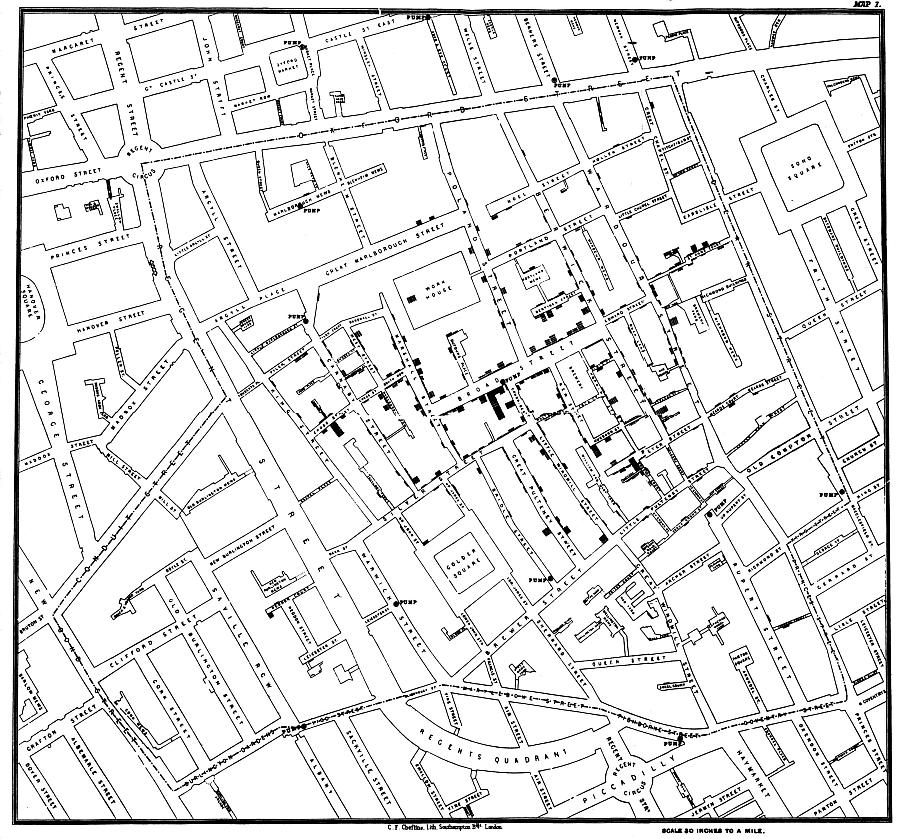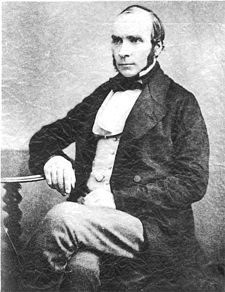A Muckraker's Award for being Willing to Actually Look at Muck

In today's hyper-evolving social media, with GPS mapping and crowd-sourcing of vast amounts of information, it might seem quaint, if not downright foolish, to believe that old school journalism's low-tech and low-cost approaches - a pen, a pad, and shoe-leather investigation - could result in an article that ignites a global furor. We're talking about an article that spread almost instantly around the world, irrevocably reframing a massive health crisis and probably changing international policies for years to come.
But it's true. Jonathan Katz, an Associated Press reporter in Haiti, did just that last fall.
Cholera is an old-fashioned disease. Cholera could be eradicated worldwide with a single proven approach in use since Victorian times: a reliable sewer system. It's easy to get caught up in obfuscating technologies like genetic footprints and resistance patterns and bio-plankton reservoirs. But the symbol of cholera's inevitable demise is the simple toilet.
A decent sewer system absolutely stops the spread of cholera. So when the initially wild-sounding, conspiracy-theoryish rumors that peacekeepers had brought cholera to Haiti were running rampant, the UN issued a statement defending the base. It said the Nepalese unit there used seven sealed septic tanks built to U.S. Environmental Protection Agency standards and emptied every week by a private company to a landfill a safe 820 feet from the river.
But armed with only a pad, a pen, "and maybe my point-and-shoot-digital camera," Katz broke a story worldwide, in much the same way that the Rev. Henry Whitehead nailed the final controversy about cholera's source during the 1854 Broad Street pump outbreak.
 In Victorian England, John Snow, a physician and epidemiologist, mapped London's Broad Street outbreak of cholera and traced it to one contaminated water pump. Even so, controversy raged. Snow's opponents were passionate public health advocates, trying to improve the plight of very poor. They felt that "miasma," or vapors, were the source of the epidemic, and that no one should be forced to live in the foul-smelling conditions of Dickensian London's poorest neighborhoods.
In Victorian England, John Snow, a physician and epidemiologist, mapped London's Broad Street outbreak of cholera and traced it to one contaminated water pump. Even so, controversy raged. Snow's opponents were passionate public health advocates, trying to improve the plight of very poor. They felt that "miasma," or vapors, were the source of the epidemic, and that no one should be forced to live in the foul-smelling conditions of Dickensian London's poorest neighborhoods.
Basically, the 1854 cholera controversy pitted those trying to help victims of appalling conditions against those trying to document a verifiable source.
As in Haiti, the Victorian London controversy played out in the press. The one fact that Snow couldn't prove was how exactly cholera got into the water supply. What was the source? The homes near the Broad Street pump had just gotten a brand new sewer line. Snow's inability to explain how cholera could have made its way from human waste into the water supply kept his opponents' arguments alive.
Which is where the Rev. Henry Whitehead enters the picture. Whitehead was a community activist, someone who took the time to listen to the community. He went to the home where the first cases of cholera began and talked to Sarah Lewis, who had watched her five-month-old daughter, Frances, and her husband, Thomas Lewis, die within hours of the onset of symptoms. Whitehead asked her to describe how she managed her family's overwhelming diarrhea.
After listening to Sarah, Whitehead decided to dig deeper. Literally. He got the assessor to dig around the drain where this mother dumped buckets of water dirtied when she rinsed her dying infant's diapers. They found gaps between the bricks in the drain that carried the effluvia way. The surrounding dirt was saturated with human feces, right up to within inches of a crack in the neighborhood's water supply. There was now a definitive link.
Almost 160 years later, after hundreds of people had already died of cholera in Haiti, Jonathan Katz went out to look at another supposedly high-quality sewer system. This time, it was at the UN Peacekeeper's base.
So far, no one had done that. You can just imagine why. Hey, if there was a problem with the toilets, someone probably already cleaned it up by now. That's what I'd be thinking. Right? Or, What's the point, I don't even have a photographer. Or maybe even, Heck, I'm just a journalist. It'd take the CDC, or a researcher with a well-stocked gene-sequencing lab, to sort this one out.
In Port au Prince in late October 2010, those would have sounded like totally reasonable responses to a paranoid-sounding rumor.
Unlike everyone else, Katz went to see for himself what was up. He drove miles just to check out someone's toilet. "You could call it an informed instinct, from having been in Haiti for three years," he explained. "The rumors had the ring of something about them --the people saying it really believed it, and there were details, and I was hearing the same thing from different sources."
I asked him what he hoped to find. "I knew the story wasn't going to be an in-depth piece about genetics or microbiology. I thought I'd go up there and see if there were more questions to ask. You might say I was looking for probable cause for further investigation. The thing is, the rumors were not flying in the face of Ockham's Razor. They weren't a complex Rube Goldberg machine of improbable steps, each of which depended on something else equally improbable. We're talking about a single event, stuff that a layman could figure out. If the sanitation was good, and a lot of people in the area didn't know what we were talking about, that's a story that's fairly quickly falsifiable. "
Instead, he found that a buried septic tank was overflowing. "The stench of excrement wafted in the air," he wrote. "Broken pipes jutting out from the back spewed liquid. One, positioned directly behind latrines, poured out a reeking black flow from frayed plastic pipe which dribbled down to the river where people were bathing."
Both Katz and an Al Jazeera reporter saw UN representatives taking samples that day. "We realized what they were saying publicly was very different from what they were doing privately," Katz said.
In both Haiti and Victorian London, it took a people being skeptical enough to actually go look at the pipes of a reportedly high-quality sewer system to document the source of a cholera epidemic.
There was tremendous resistance to investigating the source of the cholera outbreak. Katz said. "Foreigners who knew about the rumors just weren't talking about it," he recalled. And after his report, "People in global health and aid work were telling me they knew where this was going to lead, that it would make things harder and worse."
The CDC has stated that Haiti's cholera matched cholera endemic to Nepal; the germ's genetic sequencing also matched. The World Health Organization asked an epidemiologist to investigate. But the UN still has not released a report on what happened.
Katz says, "Knowing what happened may make things better. Maybe there are things we should take into account before we send a large group of people around the world to help another large group of people, things like good sanitation. I don't believe there's one ‘universal truth' and that knowing it will set you free. But I can't believe it will make life better to lie to people, or to act like it's more important to protect the soldiers than to find out what killed their family. People want to know, not just to blame anyone, but to just know. If there was an outbreak of Ebola in Iowa, people would be desperate to know where this came from."
Haiti needs sanitation and clean water to end cholera. Toilets, in other words. Katz added, "Maybe by bringing attention to it, by feeling some ownership for what happened, maybe we can bring some focus to the issue. Now we really have to make it better."
Every germ has its niche-- the ecological space where it grows. Cholera lives and thrives in political turmoil -- when we are unwilling to face our own s#*t and deal with it.
I find Jonathan Katz' story, and the lessons in it, to be both inspiring and enduring. For his intrepid Henry Whitehead-like investigation, for not being blinded by higher tech glitz, for taking the time to go out, listen to what people are saying, and look for himself, my personal public health Doc Gurley Muckraker Award goes to Jonathan Katz, of the AP.
Want to learn more about the fascinating history of cholera? Check out the UCLA John Snow website, and read Steven Johnson's fascinating book, The Ghost Map.
Photo Credit: John Snow, courtesy of Wikipedia, via Wikipedia
Photo Credit: John Snow's map of 1854 cholera outbreak, via Wikipedia

